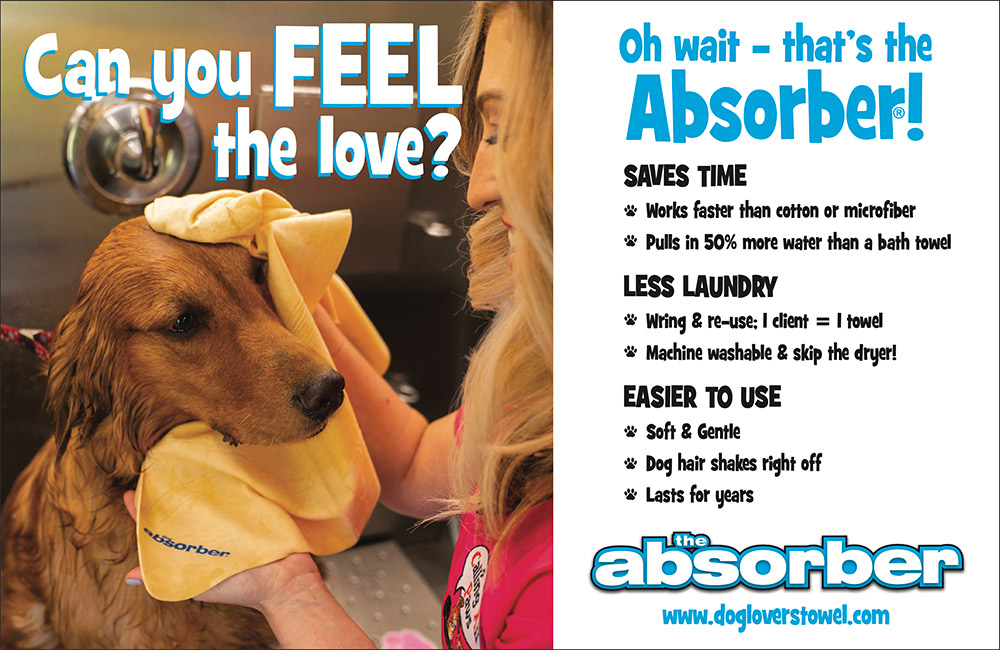


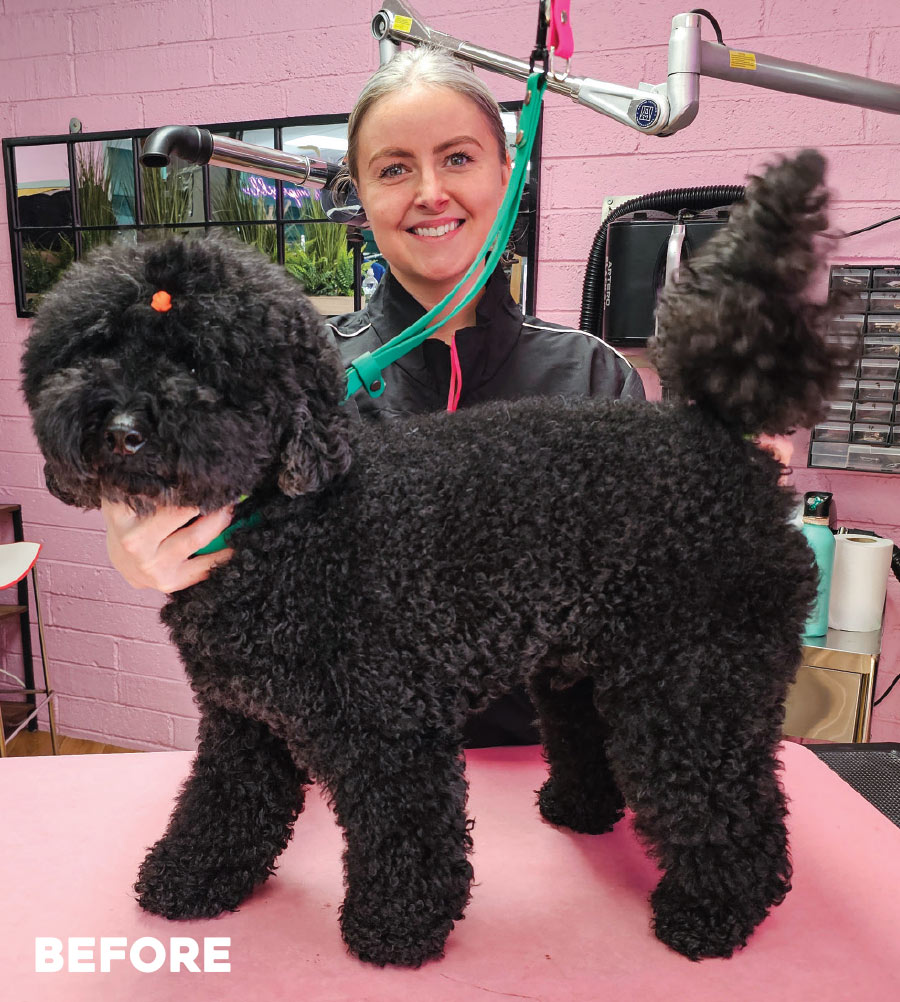

by Blake Hernandez and Emma Satchwell


by Blake Hernandez and Emma Satchwell
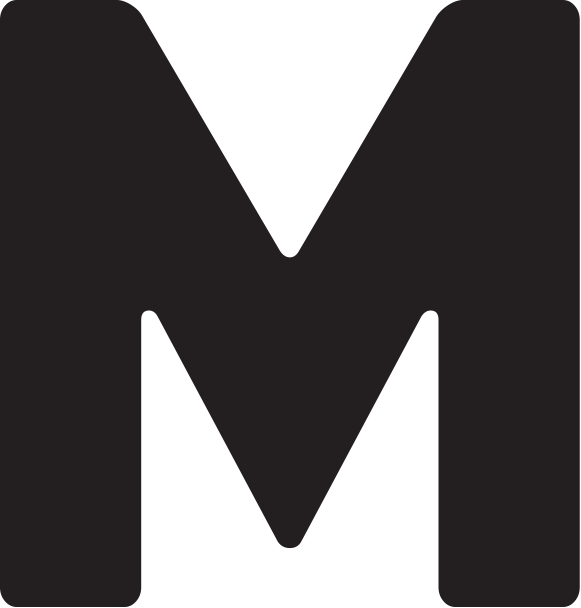 any groomers will say they don’t get enough purebred dogs in the salon, and Bichons may very well be at the top of their list when making this comment. However, I tell people constantly that I groomed tons of dogs to look like Bichons before I even started working on the purebred ones.
any groomers will say they don’t get enough purebred dogs in the salon, and Bichons may very well be at the top of their list when making this comment. However, I tell people constantly that I groomed tons of dogs to look like Bichons before I even started working on the purebred ones.
While the dog being used here is a poodle, there are plenty of curly-coated mixes that look cute dressed as a Bichon.
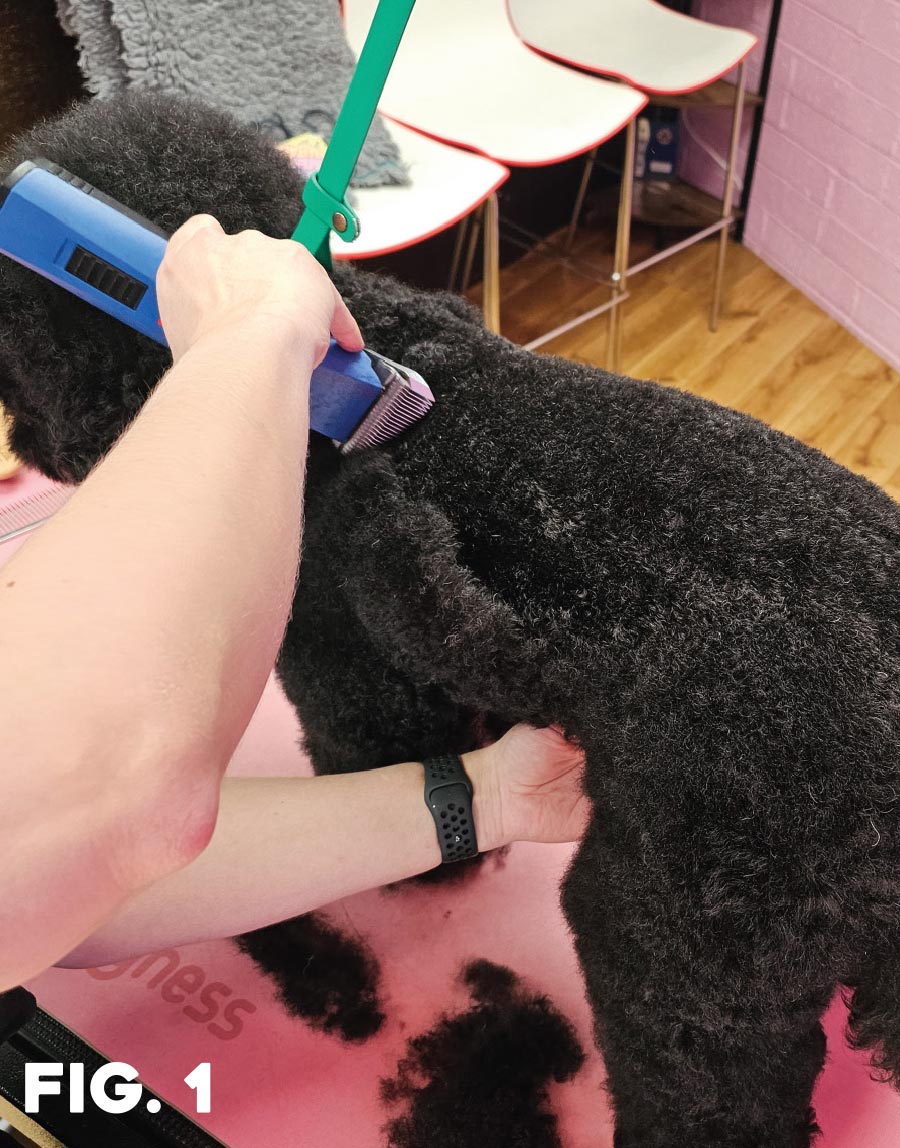
Fig. 1) Clip the dog’s body to the desired length. This is either dictated by customer request or the fact that Bichons should not have their skin exposed, so try never to go that short.

Fig. 2) For pets, it’s okay to use that same length to begin skimming the hair off in parallel lines from the shoulder.

Fig. 3) Make sure the feet are tidied up right to the pad with nothing touching the ground. Then round them up into the parallel lines of the leg.
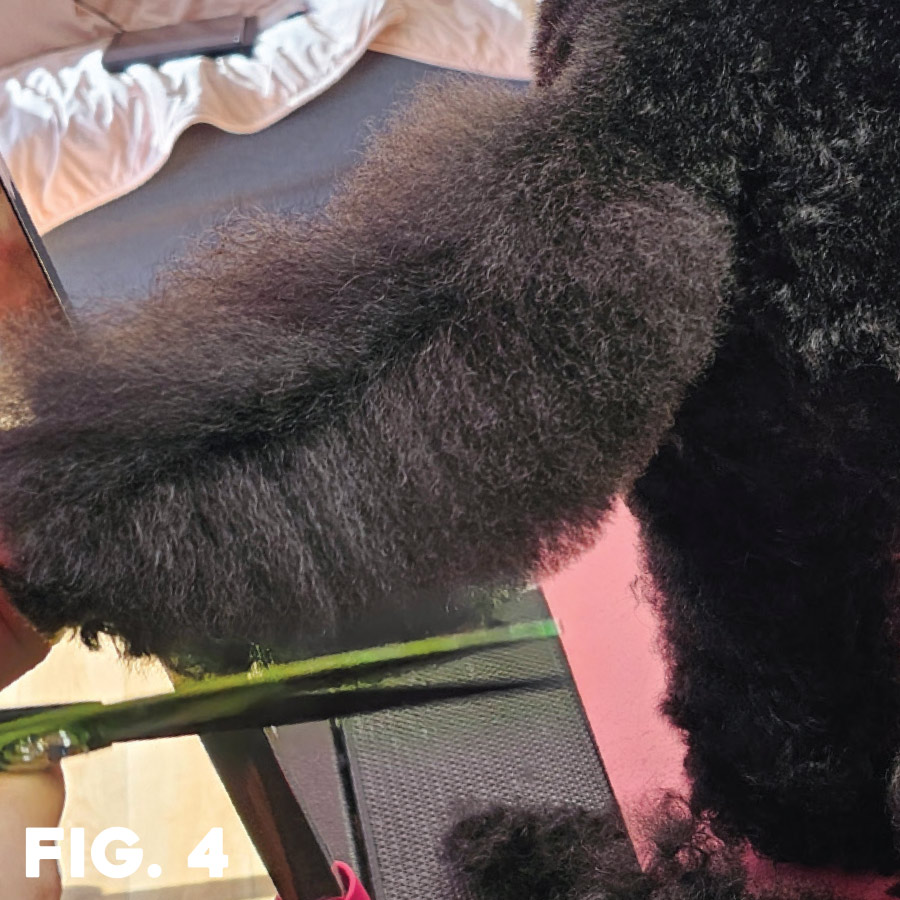
Fig. 4) Although it’s correct to leave a Bichon tail natural, this owner prefers the cleanliness of a regularly trimmed tail, so a sort of fluffy squirrel tail was done on this dog.
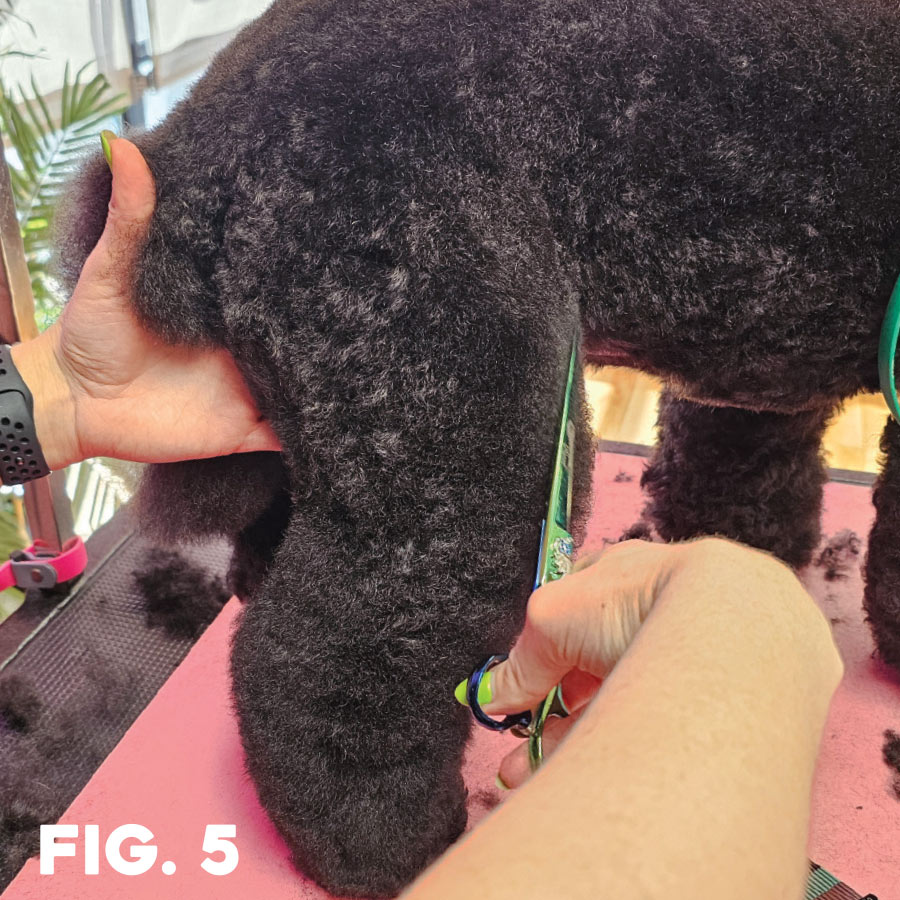
Fig. 5) Go by the profile of your dog to better achieve a shape that reflects all the angles in the leg.

Fig. 6) In order to keep yourself from cutting off at the knee, a curved chunker can be your best friend here.
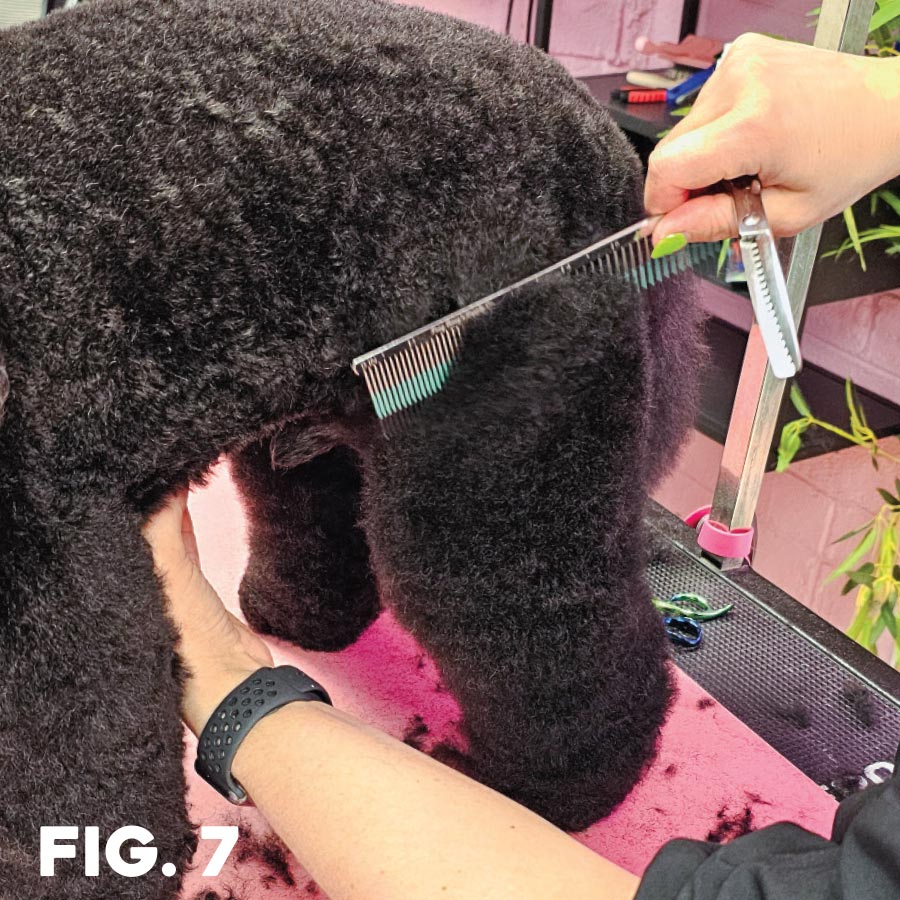
Fig. 7) Fluffing the leg really well on the outside is key to being able to scissor a straight line.
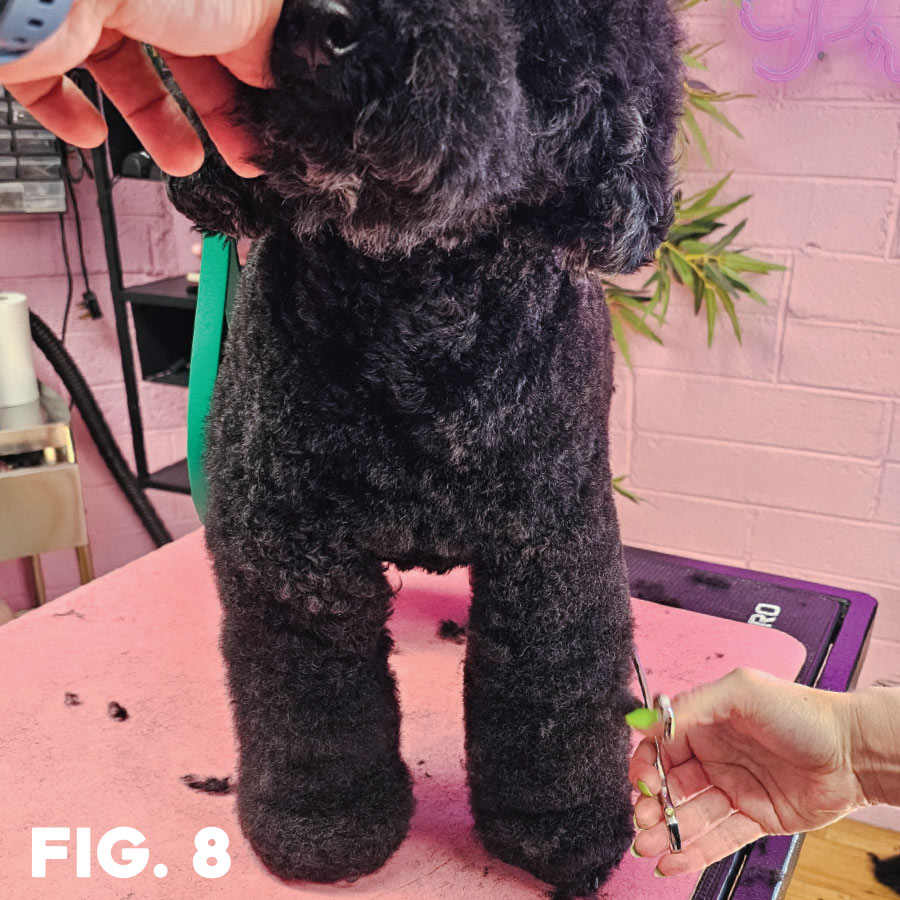
Fig. 8) Looking directly under the dog’s ear while scissoring your front legs will help your parallel lines up front stay true.

Fig. 9) The throat latch should be the shortest place on the dog to give it a bit more neck and help define the head from the neck.

Fig. 10) Use a curved scissor inverted to create the lines and expression over the dog’s eyes while also keeping it open.
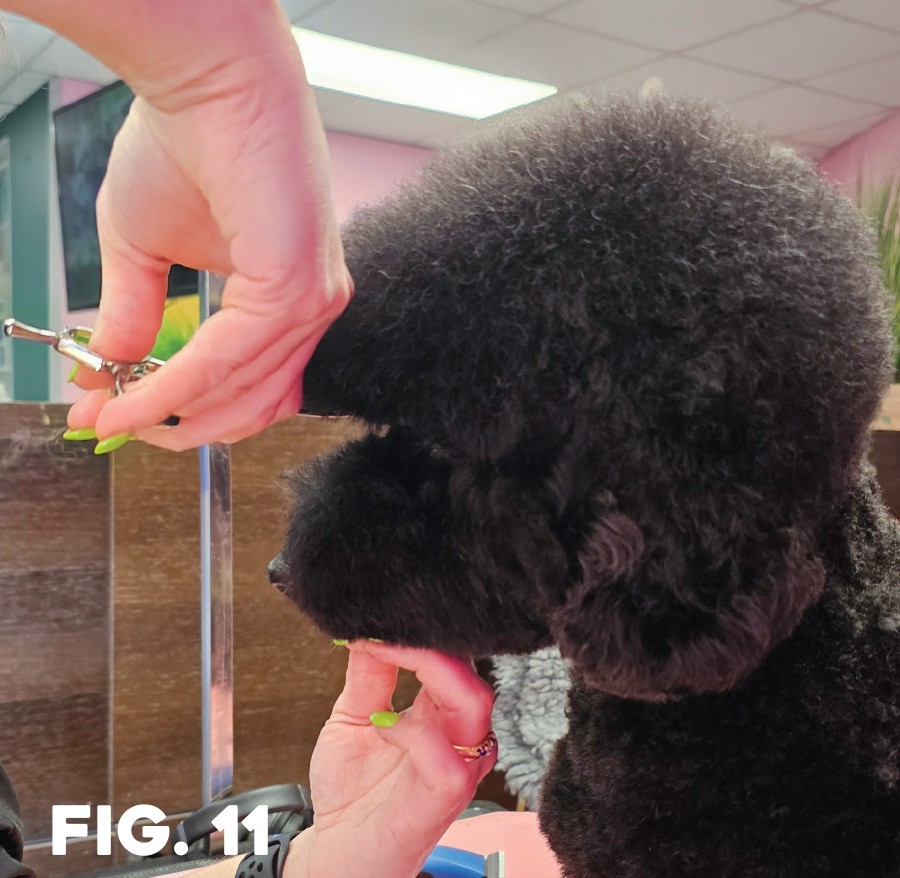
Fig. 11) From the profile, the dog should have a small beveled bubble over the eyes, mainly between the inside eye corners.
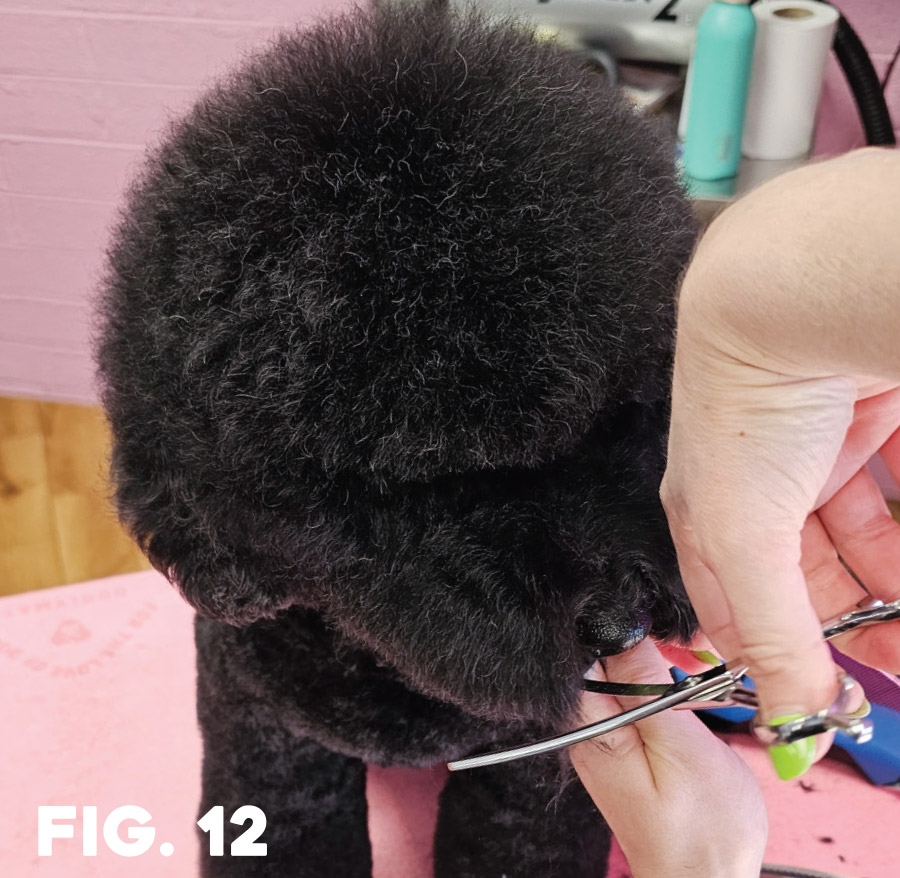
Fig. 12) Looking down from above, trim the excess lip hair back.
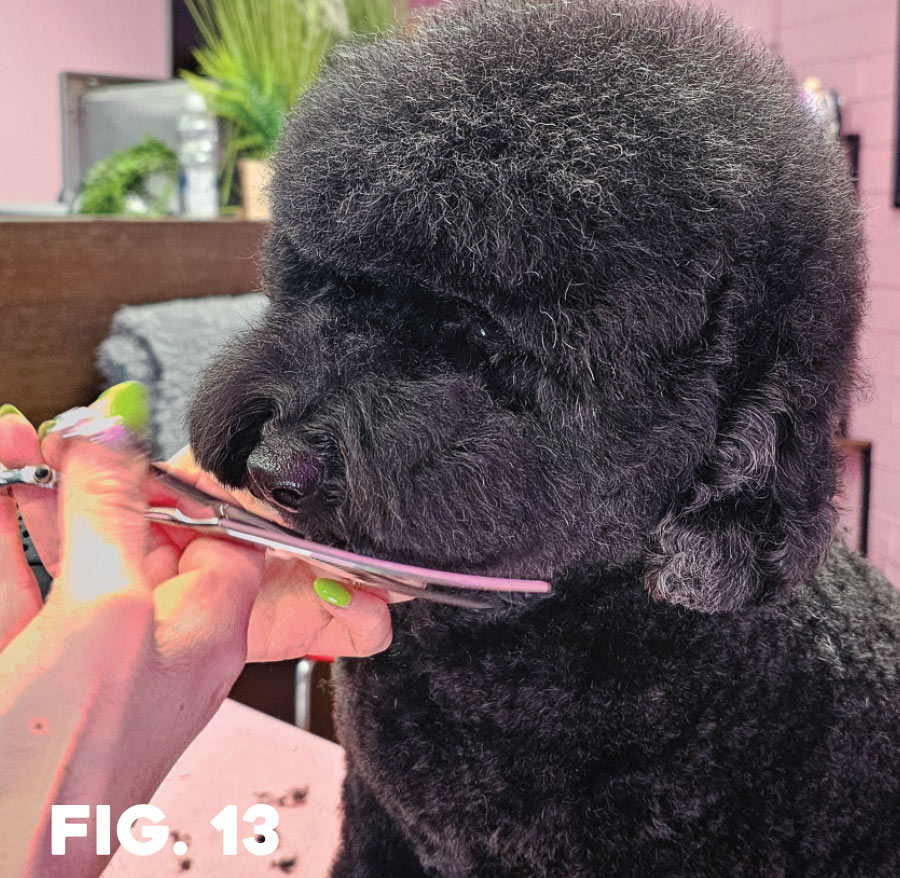
Fig. 13) With a curved scissor, follow that line from the lip back under the jaw and behind the ear.
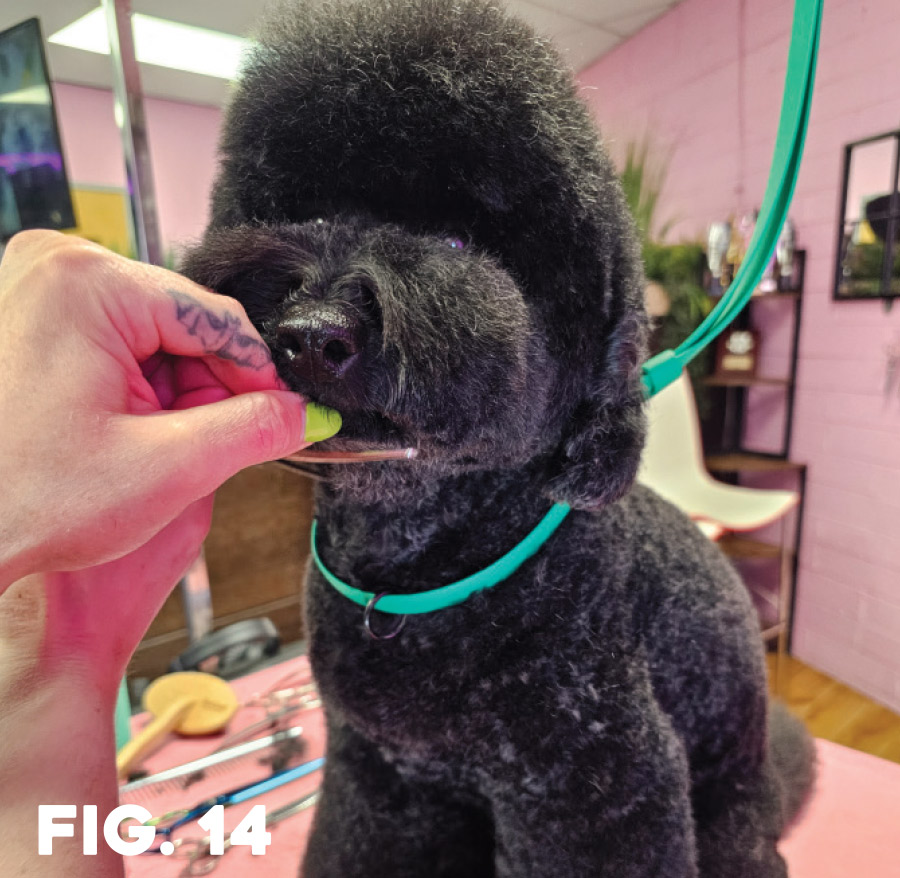
Fig. 14) For a very clean finish, go over your work from every angle. This shows a final neatening-up from the bottom of the head, and then building up to the fullest part of the head.
Give this a try, and with a few tweaks, you’ll realize how fun and cute it can be to have a Bichon in any color or pattern cross your table!
